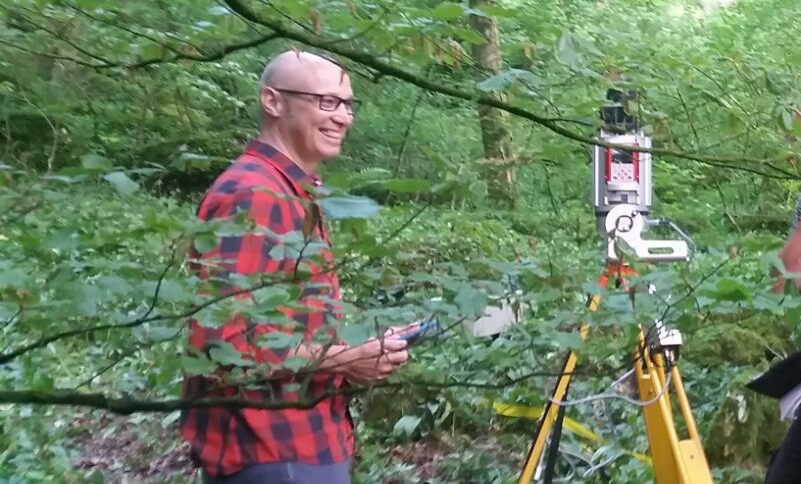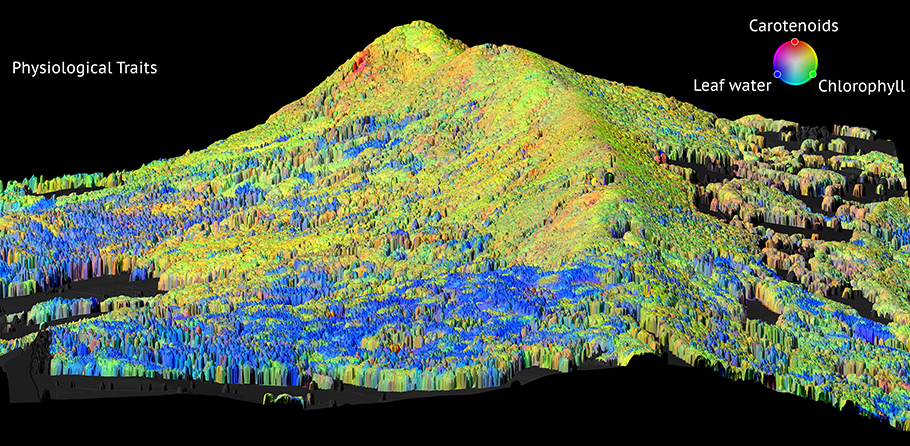Navigation auf uzh.ch
Navigation auf uzh.ch
The structure of the forest as one of the keys to biodiversity: The studied oceanograph Felix Morsdorf uses 3D laser scanning to measure every single tree.

We capture the structure of the forest. We use mainly laser scanning to create a virtual three-dimensional image. This makes the forest quantitatively measurable for various questions.
For example, forest rangers are interested to know the number of trees in a certain area, their height and their biomass. These are pivotal parameters for the management of the forest. But vegetation structure is also an index for biodiversity. A diverse surface structure of trees, stems, branches and leaves in a specific area is correlated with a high variety of plant species. And from this we can also conclude on the variety of animal species.
Yes, in collaboration with the Glaciology and Geomorphodynamics unit we measured the melting of a glacier in the Oberwallis using our laser scanning technique. I am sure there will be further such projects. The GIUZ offers an excellent research environment, in particular for establishing collaborations.
Originally, I studied physical oceanography at Kiel at the Baltic Sea coast. I investigated ocean currents in the Labrador area and participated in several expeditions. In total, I spent more than half a year on sea. But then it got too basic research focused for me. I wanted to do something applied. In 2002, I decided for a PhD in remote sensing, and landed in Zurich at the GIUZ. At this time, laser scanning was an emerging topic. I was given a lot of freedom concerning the selection of research topics and projects, and that enabled me to establish myself well in the scientific community.

The interdisciplinarity. With the URPP Global Change and Biodiversity we have taken it to the next level. I learned a lot in the last years, especially as far as biology is concerned. And I am really fascinated by the technical gadgets we use for our research. Recently, we got a laser scanner that weighs less than a kilo and can record a 3D point cloud of the surface of a certain area within a few minutes.
I will finish my habilitation this year. Lately, this fell behind due to our numerous research projects, my part-time position and the time I spent with my two sons.